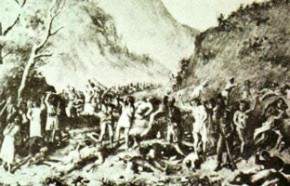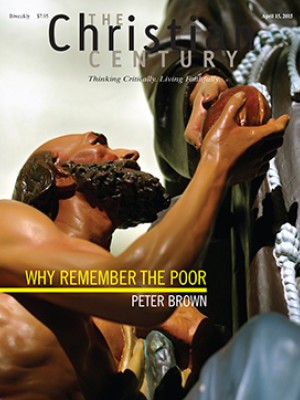Assyrians under siege

The Assyrian Christians of northern Iraq are among the people who have been massacred and kidnapped by ISIS militants in recent months. Such accounts are depressingly familiar to anyone who knows the region’s history. In fact, this year marks a grim centennial. Besides being the centennial of the Armenian Genocide, it’s the centennial of the year that the Ottoman Turkish regime struck at other Christian minorities whom it suspected of being sympathetic to Russia. The Assyrians call 1915 Sayfo, the Year of the Sword.
Assyrian Christians had very deep roots in the region, and their churches use a Semitic language related to Jesus’ own Aramaic. In late antiquity, believers divided over the Person of Christ. The Monophysite branch evolved to become the modern-day Syrian Orthodox Church. Their Nestorian rivals formed the Church of the East, which remained a flourishing transcontinental institution through the Middle Ages.
Read our latest issue or browse back issues.
By the 20th century, the Assyrian community had declined, split between believers affiliated with the Roman Catholic Church (Chaldeans) and the independent Assyrians. For historical convenience, the Assyrian label is often applied to all the Syriac-speaking denominations, including the Syrian Orthodox. Their combined population in 1914 was around 600,000, concentrated in what is now northern Iraq and the borderlands of modern-day Syria and Turkey.
These people were the targets of the Assyrian genocide. Through direct violence and starvation, the Ottoman regime killed around half that number, some 300,000 people, and some observers put the numbers even higher. Génocidaires also roamed freely in neutral Persia.
One problem with reporting such atrocities is that the stories become endlessly repetitive. Time and again we hear that Ottoman soldiers or Kurdish and Arab paramilitaries entered a village and carried away all the men for slaughter. Women were burned alive, children were bayoneted or drowned. The literature on the Assyrian genocide is appallingly full of such accounts, similar to the horrors visited on the Armenians and later the Jews. We easily become numb.
Even so, the Assyrian story is peculiarly traumatic for anyone who cares about Christian history. Much of the killing occurred in the province of Diyarbakir and in cities like Mardin and Nusaybin—all places that had once boasted a glorious Christian past. Diyarbakir was ancient Amida, a thriving monastic center and a patriarchal seat. Nusaybin was historic Nisibis, which in the seventh century was a metropolitan see with six lesser bishoprics under its control.
Under the name Edessa, the nearby city of Urfa was once a legendary Christian center. Much of Syriac Christian scholarship stems from either Edessa or Nisibis. East of Mardin lies the Tur Abdin plateau, the Mountain of God’s Servants, site of perhaps a hundred monasteries that have collectively been described as the Mount Athos of the East.
The Christian presence was still evident on the eve of the Great War, when the city of Diyarbakir was as much as 40 percent Christian. That world came to a sudden and bloody end. The governor of Diyarbakir was the monstrous Mehmed Reshid Bey, who killed perhaps 150,000 of his subjects, some 95 percent of the province’s Christian population. When asked to explain how a doctor like himself could be so vicious, he had a simple explanation: Armenians and other Christians were dangerous microbes, and it was a doctor’s sworn duty to kill such beings.
Throughout 1915 and 1916, names like Mardin and Diyarbakir featured frequently in letters from foreign diplomats and missionaries, always in the context of reporting mass murder. Modern scholars offer their heartrending catalogs of Assyrian fatalities: 7,000 killed in Nisibis, 7,000 in Urfa, 6,000 in Mardin, 5,000 in Diyarbakir. One of the many religious houses destroyed with all its monks was St. Gabriel, originally founded in 397 on the ruins of a Zoroastrian temple.
The damage was irreparable. To quote scholar David Gaunt, “The Syrian Orthodox Church specified the killing of 90,313 believers, including 154 of its priests and seven bishops, and the destruction of 156 church buildings. The Chaldeans reported the loss of six bishops, 50 priests, and 50,000 of its faithful. The Nestorians were so decimated and dispersed that they never managed to present any detailed figures.” In 1918, Kurdish forces assassinated the Catholicos patriarch of the Church of the East, who claimed to trace his office in direct succession back to the apostles Thomas and Bartholomew.
Assyrians today form a global diaspora, with large concentrations in North America, Western Europe, and Australia. Unless we understand the central role of Sayfo in their thinking, we will not understand why they are so desperately concerned with current threats to surviving Christian communities in Iraq and Syria.







